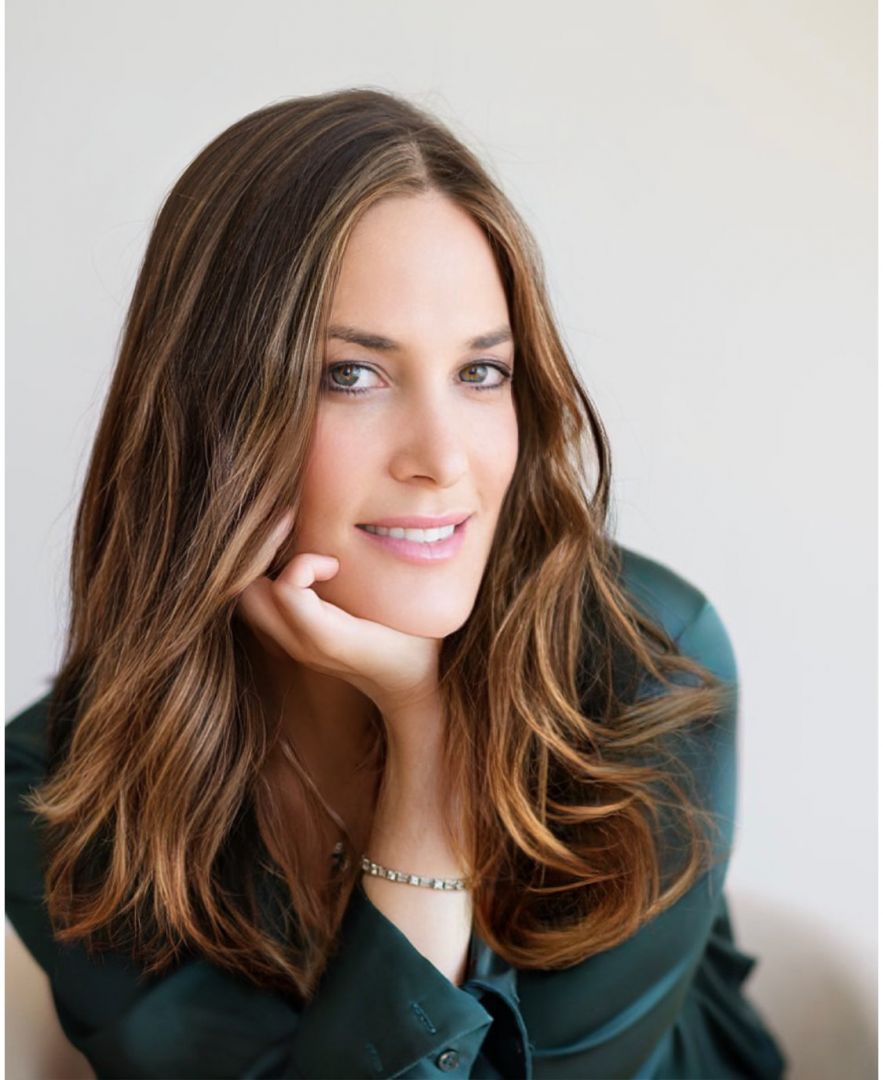Meet Michelle Glantz, Ph.D. | Clinical Psychologist


We had the good fortune of connecting with Michelle Glantz, Ph.D. and we’ve shared our conversation below.
Hi Michelle, can you talk to us a bit about the social impact of your business?
Mental health includes a total of our physical, mental, and social well-being. Maintaining good mental health impacts various factors of our lives including the ability to have and maintain healthy relationships, cope with everyday stress, maximize our productivity, maintain optimal physical health, and to enhance our quality of life. It’s easy to overlook mental health as a priority as we move through our days mindlessly and quickly, failing to consider how doing this impacts our total wellbeing.
According to the National Alliance on Mental Illness, 1 in 5 adults in the United States experience mental illness each year. The NIH estimates that 49.5% of adolescents experience a mental disorder with an estimated 22.2% of those having reported severe impairment and/or distress. Nearly 20% of children ages 3-17 in the United States have a mental, emotional, developmental, or behavioral disorder, but only 20% of those children received help from a mental health provider. NAMI has shared that the average delay between onset of mental illness symptoms and treatment is 11 years.
Despite these staggering statistics on the prevalence of mental illness, most people fail to obtain help for their struggles. Individuals resist seeking treatment due to worry, shame, and stigma around mental health diagnoses. People may feel concerned with the negative stigma and discrimination associated with having a mental illness and worry about how this could negatively impact their career, education, relationships, or other life goals. Some might acknowledge mental health concerns, but due to lack of awareness or education may believe their symptoms aren’t severe enough to warrant reaching out for help or professional treatment. Other factors which may impact individuals seeking treatment include financial difficulties and inability to pay for effective treatment. Additionally, individuals may not prioritize mental health and fail to understand its impact on their total well-being.
As a clinical psychologist, I aim to normalize the prevalence of mental health concerns and strive to communicate the importance of seeking treatment with mental health professionals. It is my belief that anyone can benefit from psychotherapy as we all have unique concerns influencing our daily lives. Talking openly and honestly about mental health does not cause or increase mental health issues, but rather allows for individuals to feel more comfortable in seeking help.
In my Los Angeles based private practice, I work with children, adolescents, adults, and couples and specialize in the treatment of mood and anxiety disorders, trauma, life transitions and perinatal mental health disorders. Working in a safe and comfortable environment, I work to help people know themselves better and to explore and understand the psychological roots of their emotional suffering. Through a focus on self-reflection and the examination and resolution of inner conflicts, I work to assist my client in exploring and modifying their patterns of thinking in order to gain a deeper understanding of themselves and to improve coping with daily struggles.

Alright, so for those in our community who might not be familiar with your business, can you tell us more?
It’s been a long road getting to where I am today professionally. I first obtained my undergraduate degree in Psychology from The George Washington University in Washington D.C. After an additional four years of graduate classes, I received both masters and doctorate degrees in Clinical Psychology from The Derner Institute of Advanced Psychological Studies at Adelphi University in New York. My year-long predoctoral internship was then completed on a long-term forensic inpatient unit at Manhattan Psychiatric Center treating patients with violent criminal histories. At this placement, I functioned as ward psychologist for severely mentally ill patients with a variety of mental health disorders, including PTSD, Schizophrenia, substance abuse, and dual diagnoses.
After having lived on the East Coast for the majority of my life, I felt compelled to explore the West Coast for the remainder of my training. Fortunately, I was accepted to and completed a one year postdoctoral fellowship in the Combat PTSD Clinic at The Long Beach VA. My original plan was to remain in Los Angeles for that year and then return to New York to begin the rest of my life and career. When I concluded my fellowship, I knew that I wasn’t ready to leave Los Angeles. Instead of returning to NY, I accepted a position at an intensive OCD treatment program doing individual and group therapy with adults. While working at this clinic, I was able to simultaneously build a private practice and start my own family in Brentwood, Los Angeles.
A portion of my work in private practice is helping expecting or new mothers or fathers work through underlying conflicts that surface around their transitions to parenthood. As a mother myself, I combine a professional and personal approach to my work and I understand first-hand the struggles and difficulties around assuming a new role as a parent.
When working with children and adolescents struggling with anxiety and/or mood disorders, I believe that it is vital to include parents in their children’s therapeutic process. In doing so, I work to help parents better understand the complexities of development, create more secure attachment patterns, and improve communication with their children. There are many clinicians who might work solely with their minor patients while having minimal to no contact with their caregivers. However, research indicates that children benefit the most from mental health therapy when their parents are involved. I advise the children I work with that the therapy space is a special place just for them and that what is discussed with me, stays between us. I do note however, that when I feel the child is in danger or that there is something important that needs to be discussed with the parents, I will discuss this with the child first and we can then speak to the parents about the concern together. Children love knowing that they have a special place to come to where they can discuss their deepest fears, insecurities, and concerns with another trusted adult that is not their parent. Children are intuitive and can sense when their emotions feel burdensome or difficult for parents who have a difficult time seeing their child distressed or sad. When working with a neutral party, this can lessen the burden children might feel by always having to rely on their parents for emotional support. At the same time, I work with parents to increase their tolerance for their children’s negative emotions through eliminating the notion that negative emotions are bad. When necessary, I will refer parents to another treatment provider for their own work in individual therapy. When a family unit feels supported through collaboration with parents, I’m less likely to be sending a child home after therapy to the same issues that brought them to me in the first place. As the home dynamics improve and parents are able to increase their reflective capacities and ability to tolerate negative emotions, a child’s mental health is more likely to improve as well.
One of the most important lessons I have learned in my journey through graduate school, training, and building a private practice is the importance of taking one step at a time. When working towards large goals it can feel overwhelming to look at all tasks you will need to accomplish. It was extremely helpful for me to only consider the next thing I needed to undertake so that the entire process felt more manageable. For example, when beginning graduate school, I didn’t spend time thinking about how I would complete every class, write each paper, or complete my doctoral dissertation. I focused on each individual step and before I knew it, I had a successful and full-time private practice.

If you had a friend visiting you, what are some of the local spots you’d want to take them around to?
There are so many wonderful activities, restaurants, and locations in and around Los Angeles! The following is a list of my most favorite recommendations and spots you can usually find me spending my free time:
Dance class with Kiari Kirk or any of the amazing instructors at LA Dance Fit (www.ladancefit.com)
Workout at the Santa Monica Stairs
Yoga class with Tom Morley of Global Tribe Retreats (www.globaltriberetreats.com)
Hiking to the Hollywood Sign and Griffith Park Observatory
Sightseeing at any of the amazing exhibits at LACMA or The Peterson Automotive Museum
Body work with Teralis Arison at his beautiful and serene home office. (www.teralis.net)
Sushi at Hide Sushi followed by bread pudding at BSweet on Sawtelle
Dinner at Giorgio Baldi
Shopping on Abbot Kinney followed by people and skateboard watching on the boardwalk
Drive up PCH for a seaside lunch at Nobu followed by shopping at The Malibu Country Mart
One of the things I love most about LA is its close proximity to other beautiful vacation destinations. Take day or overnight trips to Santa Barbara, Montecito, Palm Springs, and Ojai!

Who else deserves some credit and recognition?
I wouldn’t be where I am without the love and support of my parents. From a young age, my parents encouraged me to find passion in whatever work I chose to pursue. They told me that the most important thing in life is to make a difference and to love what you do every day. These are the same values I attempt to instill in my own children today.

Website: www.drmichelleglantz.com
Instagram: @DrMichelleGlantz
Image Credits
Shannon Sommers of Ev and Ro Photography and Christos Joannides
